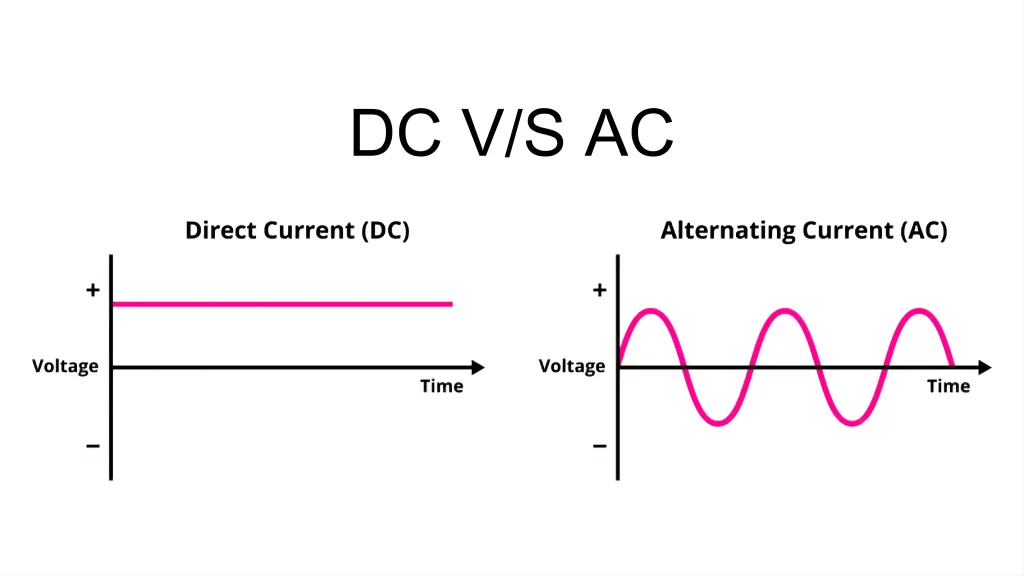- Product Knowledge
What's Your Choice? AC or DC for Underwater Lights.
When it comes to illuminating the mysterious depths of underwater environments, the choice between AC (Alternating Current) and DC (Direct Current) for underwater lights can significantly impact the effectiveness and longevity of your lighting system. In this article, we’ll explore the key differences between AC and DC for underwater lighting, helping you make an informed decision based on your specific needs.

What is Alternating Current (AC)?
Alternating Current (AC) is a type of electric current in which the flow of electric charge periodically reverses direction. In contrast to Direct Current (DC), where the electric charge flows consistently in one direction, AC changes its direction cyclically. This reversal of direction occurs at regular intervals, typically measured in hertz (Hz), which represents the number of cycles per second. The standard waveform for AC is a sine wave, where the voltage or current smoothly alternates between positive and negative values. However, other waveforms, such as square waves or triangular waves, can also represent AC depending on the application. In the realm of underwater lighting, AC systems offer certain advantages. One notable benefit is the ease of power transmission over long distances, making it a suitable choice for expansive underwater landscapes.
Advantages of AC Underwater Lights
AC underwater lights often boast higher power efficiency, providing a brighter and more consistent illumination. The widespread availability of AC power sources also makes these lights more accessible, simplifying installation and maintenance processes.
What is Direct Current (DC)?
Direct Current (DC) is a type of electric current characterized by a continuous and unidirectional flow of electric charge. Unlike Alternating Current (AC), where the electric charge periodically reverses direction, DC maintains a steady movement of electrons. In a DC circuit, electrons move from the negative terminal to the positive terminal of a power source, such as a battery or a DC power supply. On the flip side, DC, with its single-directional flow, has gained popularity for its efficiency and adaptability in specific applications, notably in underwater lighting scenarios.
Advantages of DC Underwater Lights
DC systems are known for their energy efficiency, making them an ideal choice for applications where power conservation is crucial. Additionally, DC underwater lights are often more compact and versatile, fitting seamlessly into confined spaces while delivering targeted and intense illumination.
Factors Influencing Your Choice
1. Depth and Distance
Consider the depth and distance your underwater lights need to cover. AC lights may excel in illuminating vast expanses, while DC lights may prove more efficient in closer, more intricate settings.
2. Power Efficiency
Evaluate the power efficiency required for your specific project. If a brilliant, consistent glow is paramount, AC lights might be the better option. For energy-conscious applications, DC lights could be the more suitable choice.
3. Installation and Maintenance
Examine the ease of installation and maintenance. AC lights, with their widespread power sources, may offer simpler setups, whereas DC lights could be more convenient in compact spaces.
Making the Decision
In the end, the choice between AC and DC for underwater lights boils down to your specific project requirements. There is no one-size-fits-all solution, as each system has its unique strengths.
Consider the scope of your underwater lighting project, the desired brightness, and the available power sources. Whether you opt for the widespread power reach of AC or the efficiency and adaptability of DC, ensuring your choice aligns with your project’s needs is key.
In the ever-evolving world of underwater lighting, the choice between AC and DC is a pivotal decision that can shape the success of your project. By understanding the advantages each system offers and carefully considering factors like depth, power efficiency, and installation convenience, you can make an informed choice that not only meets but surpasses your underwater illumination needs. So, what’s your choice? AC or DC? The answer lies in the unique requirements of your underwater venture. Choose wisely, and let your underwater environment shine brightly.



